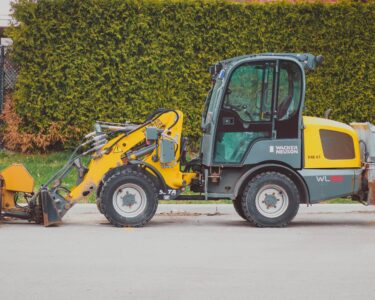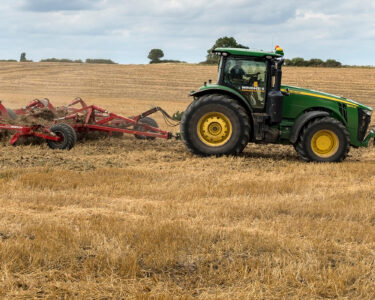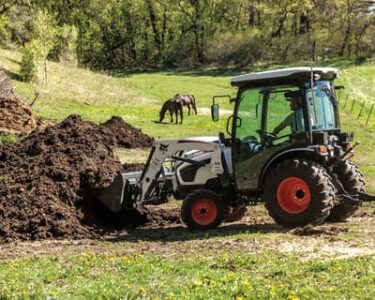Whether you’re managing a vast garden, a small farm, or landscaping chores on your property, choosing the perfect compact tractor can make all the difference. We’ll walk you through the crucial variables to take into account when picking the best compact tractor to suit your unique needs in our in-depth guide.
1. Determine Your Purpose
a. Farming
Consider the specific duties involved, such as plowing, planting, and harvesting, if you intend to use the tractor for farming. Consider your farm’s size and the kinds of crops you raise.
b. Landscaping and Yard Work
For landscaping and yard maintenance, focus on features that enable mowing, digging, grading, and hauling. Think about the terrain and any obstacles you need to navigate.
c. Versatility
Some compact tractors are designed for versatility, allowing you to switch between various attachments. This flexibility can be ideal for users with diverse needs.
2. Horsepower Matters
a. Matching Tasks
Select a tractor with an appropriate horsepower rating for your intended tasks. Overpowered or underpowered tractors can lead to inefficiencies and increased fuel consumption.
b. Attachments
Consider the attachments you plan to use and ensure your tractor’s horsepower can accommodate them. Different tasks may require varying levels of power.
3. Transmission Options
a. Manual
Manual transmissions are straightforward and cost-effective. They’re suitable for users who are comfortable with manual gear shifting.
b. Hydrostatic
Hydrostatic transmissions provide smooth and seamless speed control without the need for manual shifting. They are user-friendly, making them an excellent choice for beginners.
4. Attachments and Compatibility
a. Attachment Options
Evaluate the availability of attachments such as loaders, backhoes, mowers, and tillers that are compatible with your tractor model. Versatile attachments can expand your tractor’s capabilities.
b. Quick Hitch Systems
Quick hitch systems make it easy to attach and detach implements, saving you time and effort when switching between tasks.
5. Ergonomics and Comfort
a. Operator Comfort
Consider the ergonomics of the tractor’s design. A comfortable seat, well-placed controls, and good visibility are essential for operator comfort during long hours of use.
b. Noise and Vibration
Reduced noise and vibration levels can significantly improve the operator’s experience and reduce fatigue.
6. Budget and Maintenance Costs
a. Initial Cost
Set a budget for your compact tractor purchase, including any necessary attachments. Compare prices and features from different manufacturers to find the best value.
b. Maintenance
Consider the long-term costs of maintaining your tractor. Check for the availability of replacement parts and assess the manufacturer’s reputation for durability and reliability.
7. Dealer Support and Warranty
a. Dealer Accessibility
Choose a tractor brand with a local dealer or service center to ensure easy access to maintenance and repairs.
b. Warranty Coverage
Review the manufacturer’s warranty and the coverage it provides. A strong warranty can provide peace of mind for your investment.
8. Test Drive and Research
a. Test Drive
Whenever possible, test drive the compact tractor to get a feel for its handling and operation.
b. User Reviews
Research user reviews and seek recommendations from others who have experience with the specific tractor model you’re considering.
9. Safety Features
a. Roll-Over Protection
Consider tractors equipped with Roll-Over Protection Structures (ROPS) and seat belts to enhance safety.
b. Lighting and Visibility
Tractors with proper lighting and visibility features are essential, especially for working during low-light conditions.
Conclusion
Choosing the best compact tractor for your needs requires careful consideration of your specific tasks, horsepower requirements, transmission preferences, attachment options, comfort, budget, and ongoing maintenance costs. By evaluating these factors and conducting thorough research, you can make an informed decision that will serve you well for years to come.
FAQs
Q1. What is the typical horsepower range for compact tractors?
A1. Compact tractors typically range from 20 to 75 horsepower, although some models may offer more or less depending on the brand and model.
Q2. Are compact tractors suitable for snow removal tasks?
A2. Yes, many compact tractors can be equipped with snow removal attachments such as snow blowers or plows, making them suitable for clearing driveways and walkways.
Q3. How can I find compatible attachments for my compact tractor?
A3. Manufacturers often provide lists of compatible attachments for specific tractor models. You can also consult with your local tractor dealer for guidance on compatible options.
Q4. What maintenance tasks should I perform regularly to keep my compact tractor in good condition?
A4. Regular maintenance tasks may include oil changes, filter replacements, lubrication of moving parts, and inspections for wear and tear. Consult your tractor’s manual for a recommended maintenance schedule.




82 Comments